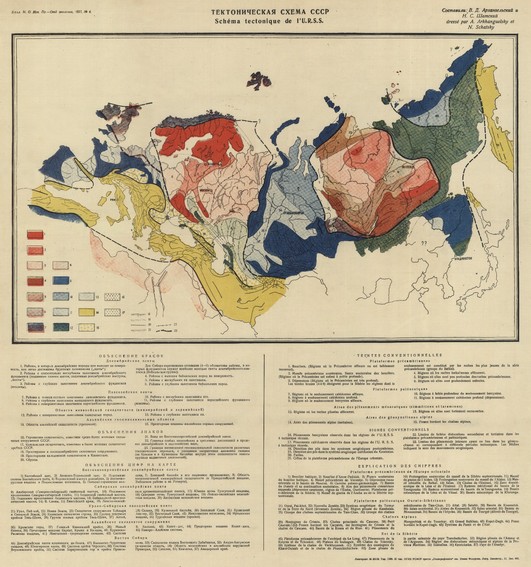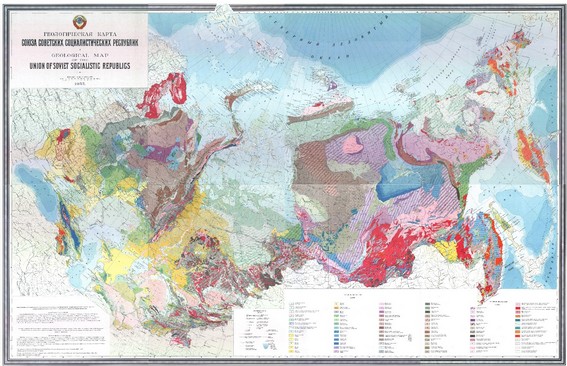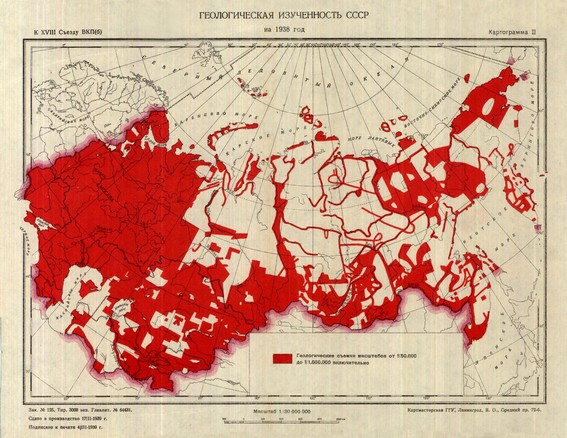1931– Premature dividing of the country's largest geological centre into low-power institutes became obvious, and already in 1931, sectoral geological exploration institutes merged into the Central Geological Prospecting Institute (TsNIGRI), located in Leningrad in GeolCom building. Only the Petroleum Exploration Institute (NGRI) remained independent. In 1947, it was renamed the All-Union Petroleum Research Exploration Institute (VNIGRI). Thus, the newly united TsNIGRI freed itself from state administrative, planning, and financial functions, but retained all the main highly qualified personnel and continued research in all the most important areas of scientific activity of the Geological Committee.

Work focused on nine national economic problems: “1. Greater Leningrad with the Kola Peninsula, North Karelia and the Northern Territory; 2. Iron ores of the Kryvoy Rog type in the European part of the country; 3. Big Donbass; 4. The Great Volga; 5. The Caspian Lowland; 6. Ural-Kuznetsk Combine; 7. Southern region of non-ferrous metallurgy; 8. Angara-Yenisei; 9. The Far East with Yakutia. "
TsNIGRI directors in different years were: A.S. Zorabyan (1931-1932), V.A. Yazykov (1932-1934), T.T. Litvinov (1934), N.A. Khudyakov (1934-1936), P.M. Nikitin (1936-1937), M.N. Litvinov (1937-1938), D.F. Maslennikov (1938-1939).
1937 –TsNIGRI tasks expanded, it was given the functions of the All-Union Geological Centre, whose activities were aimed at:
Study of the geological structure of the USSR (the most important achievement of the institute, which had national significance, is the first Geological map of the USSR at 1: 5,000,000 scale, published for the ХVII IGC Session (Moscow) and handed to its delegates);
Expansion of its raw material base (V.K. Kotulsky discovered the Monchegorsk deposit of sulphide copper-nickel ores, D.F. Murashov and K.M. Koshits – Kovdor iron ore deposit, solved the problem of providing the country with borate raw materials (P.I. Preobrazhensky, N.I. Marochkin), systematic work began on the search for diamonds (A.P. Burov, A.A. Averin, N.P. Verbitskaya and others);
3. Improvement of the methods and techniques of geological exploration, conducting geochemical and geophysical studies (I.A. Utkin, N.I. Safonov, E.A. Sergeev, A.P. Solovov, N.N. Sochevanov, B.A. Andreev, A.A. Logachev, L.Ya. Nestrov, A.M. Pylaev, A.S. Semenov);
4. All employees of the institute took commensurate part in the provision of methodological assistance to industrial and related institution.

With the active participation of TsNIGRI, the international authority of national geological science and practice was strengthened. A mark of high appreciation of the country's geologists achievements by the world geological community was the decision taken at the 17th IGC Session on the recognition of the Russian language as one of the official Congress languages.

1938 – a major event in the planned geological study of the country was compilation of the first gridded State Geological Map of the USSR at 1: 1,000,000 scale started by the initiative of one of the veteran GeolCom-TsNIGRI employees A.P. Gerasimov. The program compiled under his leadership provided for 221 map sheets with explanatory notes.

Received further development: palaeontological-stratigraphic (V.N. Veber, I.I. Gorsky, L.D. Kiparisova, B.K. Likharev, V.P. Nekhoroshev, A.V. Khabakov, etc.); petrographic studies (N.A. Zavaritsky, V.N. Lodochnikov, Yu.Ir. Polovinkina, V.S. Sobolev, etc.); Quaternary geology, geomorphology (S.G. Boch, S.V. Kalesnik, I.I. Krasnov, K.K. Markov, S.S. Shults, Ya.S. Edelshtein, S.V. Epshtein, S.A. Yakovlev and others); M.M. Tetyaev founded a new direction in the study of geological structures, geotectonics; hydrogeology and engineering geology (N.V. Bobkov, P.I. Butov, M.M. Vasilevsky, A.I. Dzens-Litovsky, I.K. Zaitsev, N.I. Tolstikhin and others). Edited by A.A. Borisyak, the first Stratigraphic Dictionary was published.